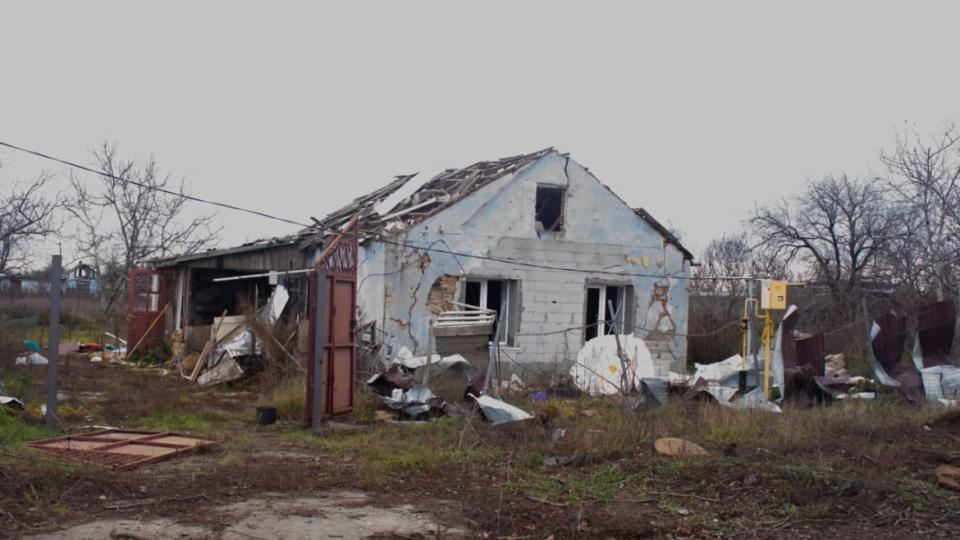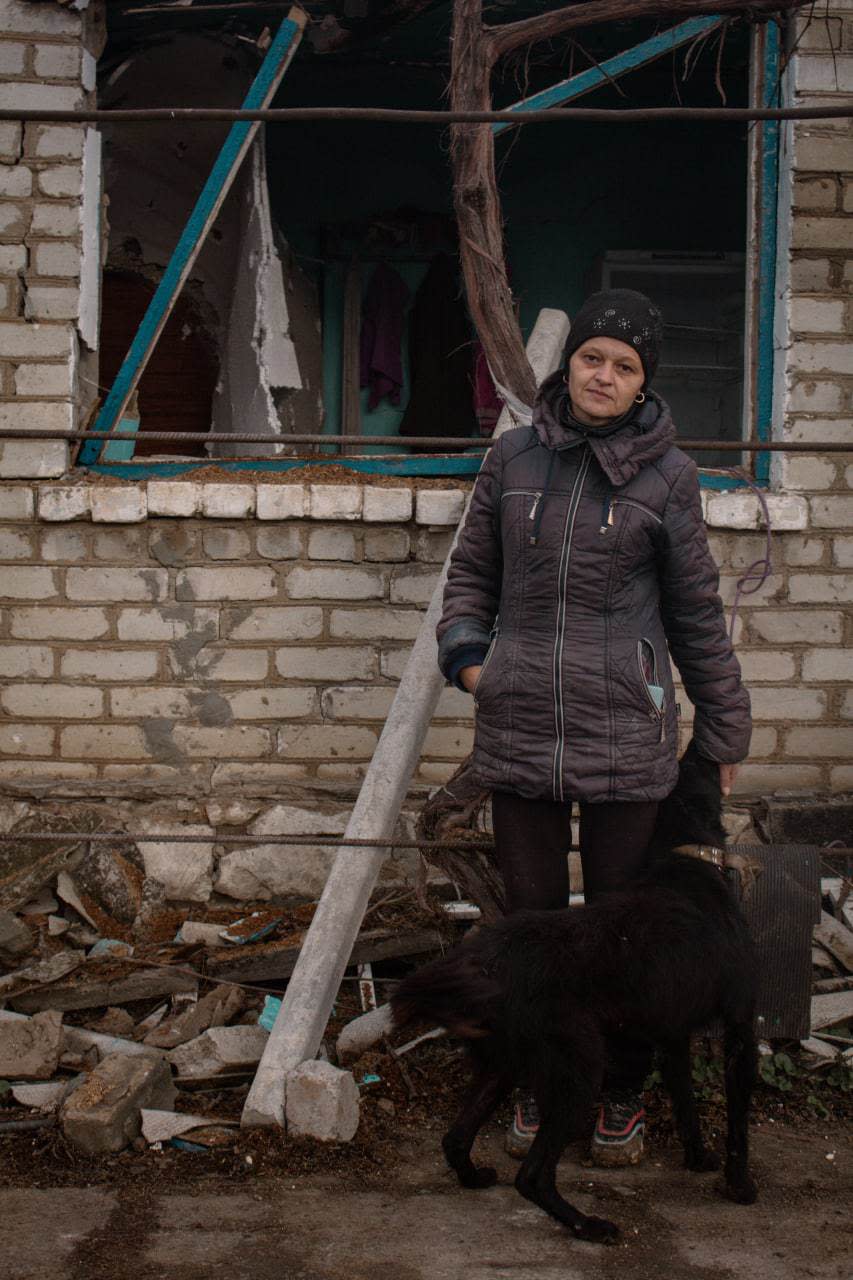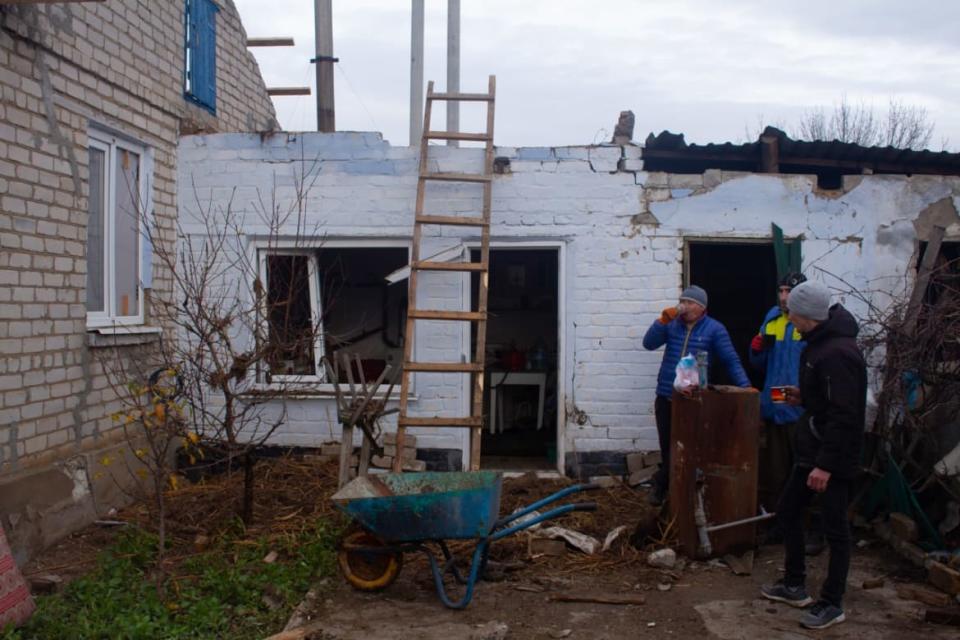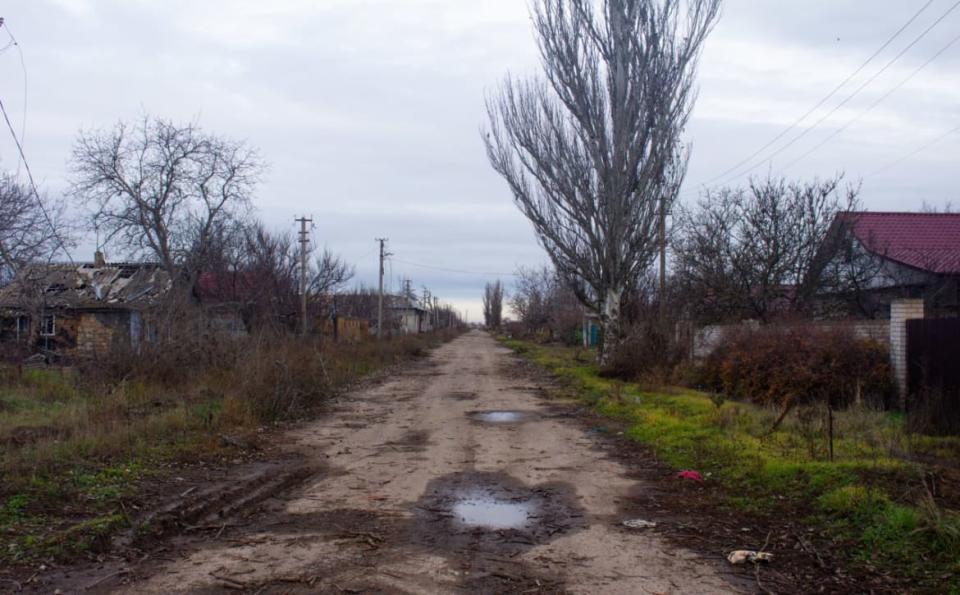Booby-Trapped Hellscape Left Behind by Putin’s Losing Troops

KHERSON REGION, Ukraine—The sight of fresh planks of wood on the roof of a destroyed house was like a small ray of sunshine sticking out among the wreckage of the village of Myrne.
“At the very start of the war, one [Ukrainian] soldier made a stupid TikTok video on the streets outside our house,” Tatiana, a middle-aged local resident, told The Daily Beast. She picked up her phone to show a video of a grinning young man in military uniform, boasting of his unit’s success in pushing the Russians back.
Almost immediately after that, Russian artillery had fired on her property, thinking that the Ukrainian soldiers had sheltered inside it.
Ukraine’s operational security is much tighter now, but Tatiana’s anger is still palpable. For six months, this village had been on the Ukrainian front line of the war for the Kherson region, which Russian forces had seized in the opening weeks of the invasion. Tatiana had stayed behind under bombardment with only her dog for company. The poor animal’s fur was ragged—it was shell-shocked and barked its head off at anyone who took a step towards it.
Life in Kherson is nowhere near normal yet. Not only are residents still in danger of Russian shelling, but the fields are littered with mines, discarded and unexploded munitions, and booby traps set up by retreating Russian troops.

Tatiana and her dog outside her damaged house.
When driving back from Snihurivka, another former frontline village, we passed a Ukrainian tank lying on its side in a roadside ditch. It had been wrecked less than 15 minutes before by a grenade detonation. Its tracks had fallen off, its chassis was cracked, and it was leaking fuel. Its crew were sitting on top of the carcass, nervous and shaking but miraculously uninjured.
Anthony Connell, a mine clearance expert at the Swiss de-mining company FSD, predicted it would take “decades of peace” for the Ukrainians to clear the country of explosive remnants. He has worked in the Donbas region since 2016, which was one of the most mine contaminated regions in the world—even then.
Now, the damage to the whole country is indescribably worse. Even in the regions of Kyiv and Chernihiv, where battles raged for just over a month, many areas are too dangerous to walk through. Connell estimated dozens of civilians had been killed by explosives in those regions since they were liberated in April.
Adding to the troubles of civilians like Tatiana is the dire economic crisis triggered by the war. Tatiana’s brother-in-law, who did not want to be named, said that the local authorities had promised financial assistance, but that nothing had so far materialized.
“When can we get back to living here? It’s all about money. And we have very little,” he told The Daily Beast. They will be rebuilding as much as they can before the worst of the cold weather hits. Then they plan to stay with extended family in the Mykolaiv region before returning to their village in springtime.
This is the start of what will likely be the hardest winter in Ukraine’s recent history, as civilians struggle with widespread shortages of heat and water after a series of Russian missile strikes crippled the country’s power infrastructure.

Tatiana’s relatives drinking tea on a break from work.
As with a great many of the privations during the war, Ukrainians are adapting the best they can. Walking the streets of any major city, you can hear the whir of diesel generators being imported in their thousands to power local homes and businesses.
Local authorities and civil society organizations have set up thousands of “invincibility stations” in schools, public buildings, and railway stations across Ukraine. These are tents with heaters, electricity stations to charge devices, and provisions of tea, coffee, and sandwiches. But these can be little more than a Band-Aid over what has become the most difficult period since the full-scale invasion began in February.
When The Daily Beast visited the Kherson region last Thursday, lines of cars were streaming from the entrance to Kherson city, as hundreds fled renewed shelling by the Russian army, now entrenched over the Dnipro River just 1 mile or so away.
It is a far cry from the jubilation of the previous week, where a triumphant President Volodymyr Zelensky entered the main city square, which was full of joyful citizens singing patriotic songs and waving Ukrainian flags.
Since then, at least 32 civilians have been killed by Russian attacks, the highest of any region in the country. The city has been entirely without power, and local authorities have insisted that anyone with the ability to evacuate for the winter should do so.

The devastated main road in the village of Myrne.
What is happening in Kherson is a microcosm of the state of Ukraine as a whole.
There is a sad irony because on the military front, Ukraine’s armed forces are performing better than even the most optimistic predictions made before the war. The Ukrainians recently undertook two well-executed and successful counteroffensives in the Kharkiv and Kherson regions, allowing them to liberate swathes of territory, including the only regional capital the Russians had captured.
Meanwhile, the Russians have been unable to accomplish even their most pared-down war objectives. In the Donetsk region, the Russian army and Wagner mercenary group have been relentlessly assaulting the small city of Bakhmut, making incremental territorial gains at the cost of high casualties.

A cat scavenges in a Russian trench.
About a five-minute drive down the road from Tatiana’s place are the remains of Russian trenches, full of abandoned weaponry and ammunition covered in rubbish. Crawling through the wreckage and scavenging for food was a ginger tabby cat with bright green eyes, which jumped in our vehicle and refused to leave. We ended up taking him with us to Kyiv.
Back in the capital, Anna Kudriashova, a well-known singer, said she expected to see out the winter in her home no matter what happened. “I am with my family,” she told The Daily Beast, “and this is the most important and warming thing for me.”
Get the Daily Beast's biggest scoops and scandals delivered right to your inbox. Sign up now.
Stay informed and gain unlimited access to the Daily Beast's unmatched reporting. Subscribe now.

 Yahoo Movies
Yahoo Movies 